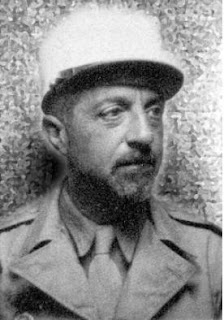Andrea Camilleri – author
Creator of Inspector Montalbano
Writer and film producer Andrea Camilleri was born on this day in 1925 in Porto Empedocle in Sicily. Famous for creating the fictional character Inspector Montalbano, Camilleri is a prolific, best-selling novelist who has generated worldwide interest in the culture and landscapes of Sicily. Camilleri studied literature and although he never completed his course he began to write poems and short stories. He was taught stage and film direction and became a director and a screen writer. He worked on several television productions for RAI, including the Inspector Maigret series. He wrote his first novel in 1978 but it was not until 1992 that one of his novels, La stagione della caccia - The Hunting Season - became a bestseller. In 1994 Camilleri published La forma dell’acqua - The Shape of Water - which was the first novel to feature the character of Inspector Montalbano, a detective serving the police in Vigàta, an imaginary Sicilian town. The book was written in Italian but had a real Sicilian flavour, with local phrases and sayings and descriptions of the classic Sicilian dishes particularly favoured by Montalbano. Read more...
___________________________________________________________________
Francesco I d’Este – Duke of Modena
Military leader left legacy of fine architecture
Francesco I, Duke of Modena, who was to be immortalised in a bust by the sculptor, Bernini, was born on this day in 1610 in Modena in Emilia-Romagna. He is remembered as a skilful military commander, who enriched Modena with the building of the Ducal Palace. Francesco was the eldest son of Alfonso III d’Este and Isabella of Savoy and became Duke of Modena in 1629 after the death of his mother had prompted his grieving father to abdicate in order to take religious vows and become a Capuchin Friar in Merano. During the next two years about 70 per cent of the inhabitants of Modena were killed by the plague. The Duke’s father, now known as Fra’ Giambattista da Modena, tried to help the dying and went about preaching during the outbreak of plague, before retiring to a convent built by Francesco for him in Castelnuovo in Garfagnana. After the outbreak of the Thirty Years War, Francesco sided with Spain and invaded the Duchy of Parma, but when he went to Spain to claim his reward he was able to acquire only Corregio, for a payment of 230,000 florins. Read more…
__________________________________________________________________
Isabella Leonarda – composer
Devout nun wrote an abundance of Baroque music
Isabella Leonarda, a nun who was one of the most productive women composers of her time, was born on this day in 1620 in Novara. Leonarda’s published work spans a period of 60 years and she has been credited with more than 200 compositions. She did not start composing regularly until she was in her fifties, but noted in the dedication to one of her works that she wrote music only during time allocated for rest, so as not to neglect her administrative duties within the convent. Leonarda was the daughter of Count Gianantonio Leonardi and his wife Apollonia. The Leonardi were important people in Novara, many of them church and civic officials. Leonarda entered the Collegio di Sant’Orsola, a convent in Novara, when she was 16 and rose to a high position within the convent. Her published compositions began to appear in 1640 but it was the work she produced later in her life that she is remembered for today and she became one of the most prolific convent composers of the Baroque era. It is believed she taught the other nuns to perform music, which would have given her the opportunity to have her own compositions performed. Read more…
Home



























